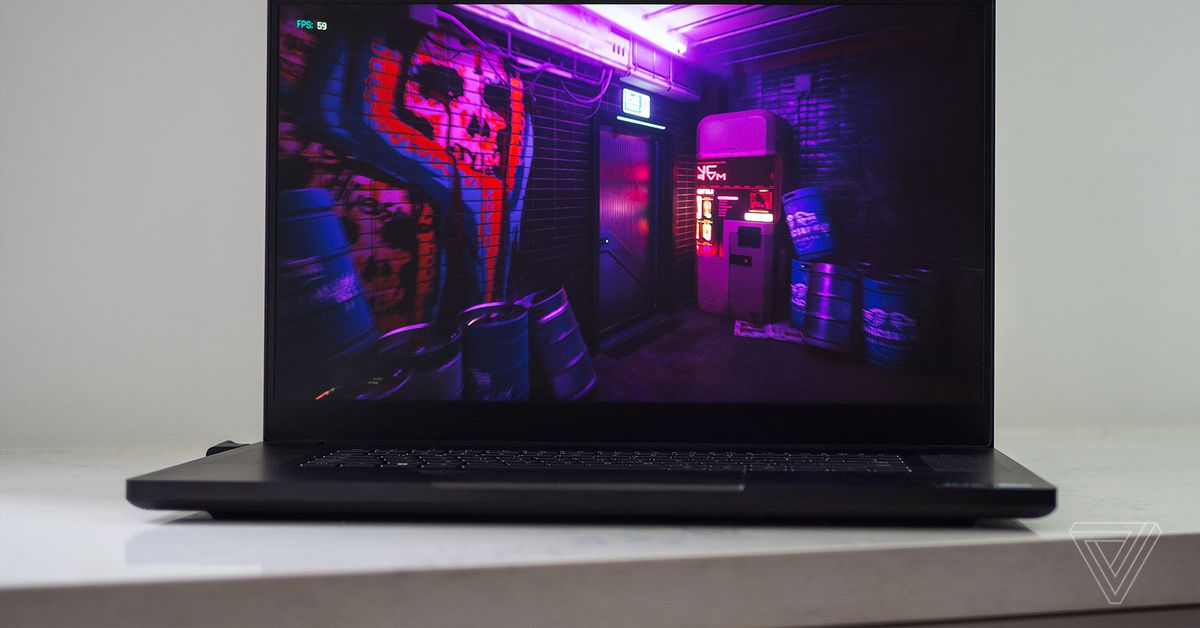Nvidia might finally fix its VRAM problem — but it will take time
Nvidia might be fixing one of the biggest problems with its graphics cards, but it's going to take some time.

 Luke Larsen / Digital Trends
Luke Larsen / Digital Trends
It’s no secret that some of Nvidia’s best graphics cards could use a little more VRAM. According to a new leak, Nvidia may be addressing that problem in a big way — at least in laptops. The RTX 5090 laptop GPU is now reported to come with 24GB VRAM across a 256-bit memory bus. The downside? These new laptops might not make it to market as soon as we’d hoped.
The information comes from Moore’s Law Is Dead, who cites his own industry sources as he spills the beans on RTX 50-series laptop specs. Up until now, we’ve not heard much about Nvidia’s plans for RTX 50 laptops, indicating that they might be a few months away. The YouTuber agrees with this, saying that Nvidia might be targeting a launch window in the first or second quarter of 2025. This might not affect the entire lineup, though.
The reason why Nvidia might be planning to increase the VRAM on the laptop RTX 5090 is that it’s planning to use newer GDDR7 memory modules for it, with 3GB, up from 2GB. This boosts the memory capacity from 16GB (which the company used in this generation) to 24GB. However, as Moore’s Law Is Dead speculates, that also might be why Nvidia is holding off on the RTX 5090 laptop GPU in particular.
 Moore's Law Is Dead
Moore's Law Is DeadAccording to the YouTuber, Nvidia’s current plan is to first launch the RTX 5090 and the RTX 5080 in their desktop versions this year. It’s worth noting that most leakers disagree with this timeline — the GPUs aren’t expected to be announced until CES 2025 at this point.
Following the reported desktop launch, Nvidia is said to be unveiling some RTX 50-series laptops at CES 2025 in January, but those will all use the memory modules that are ready now, meaning the 2GB versions. As per the source cited by Moore’s Law Is Dead, the RTX 5090M doesn’t come in a 16GB configuration at all, which is why it won’t be launched alongside the rest of the lineup. Laptop cards like the RTX 5080, RTX 5070, and RTX 5060 might all still make an appearance at CES and launch shortly after with 16GB, 12GB, and 8GB of memory, respectively. They’ll use the 2GB modules, though.
One interesting thing to note is that, while Nvidia will likely use the GB203 die for the desktop RTX 5080 and then use that same die for the RTX 5090 (laptop version), the desktop card will still be limited to just 16GB of memory. In the grand scheme of things, this kind of adds up — if Nvidia is launching desktop GPUs first, the RTX 5080 wouldn’t have been ready with more memory assuming that these 3GB modules aren’t readily available yet. But all of this is still just speculation, and the final specs are unknown to the public.
More VRAM on laptop GPUs is certainly good news for gamers, but it’s hard to know how much of this will turn out to be true. As things stand now, we might not have any concrete information until CES 2025.
Monica is a UK-based freelance writer and self-proclaimed geek. A firm believer in the "PC building is just like expensive…
Microsoft might be building its own Vision Pro rival
Posts on X are popping up reporting that Microsoft has signed a development and supply contract with Samsung Display for micro-OLED displays.
The information originates from a Korean tech site, The Elec, which claims that Microsoft wants "hundreds of thousands" of these displays for an XR device designed for gaming and media consumption. In other words, a competitor for the Vision Pro -- or rather, another competitor for the Vision Pro.
Intel finally delivers some much-needed good news on its CPUs
After a challenging second-quarter earnings call and issues with its Raptor Lake CPUs, Intel has some positive news. The company’s first 18A chips have returned from the fab and successfully booted operating systems. This includes the Panther Lake for PCs and Clearwater Forest server CPUs.
Panther Lake will follow this year's Lunar Lake and Arrow Lake launches as Intel's new family of mobile processors, both likely for late 2025. On the other hand, Clearwater Forest will launch as a successor to Sierra Forest all-E-core Xeon parts that were launched back in June.
Intel is finally stepping up on its instability fiasco
Last week, Intel quietly committed to extending the warranty on its 13th-gen and 14th-gen CPUs, but it wouldn't provide details at the time. Now, we know what processors are covered. Intel is extending the warranty on a large range of 13th-gen and 14th-gen CPUs by two years, giving customers a total of five years to file a warranty claim.
From a performance standpoint, Intel's latest 13th-gen and 14th-gen CPUs are among the best processors you can buy, but the chips have been in hot water as of late. A string of instability issues, and a lack of communication from Intel, have eroded trust not only in the CPUs, but also Intel as a brand. The warranty extension is an attempt by Intel to help restore that trust, as the narrative around Intel's instability troubles has only become more intense as time goes on.

 Koichiko
Koichiko 




































